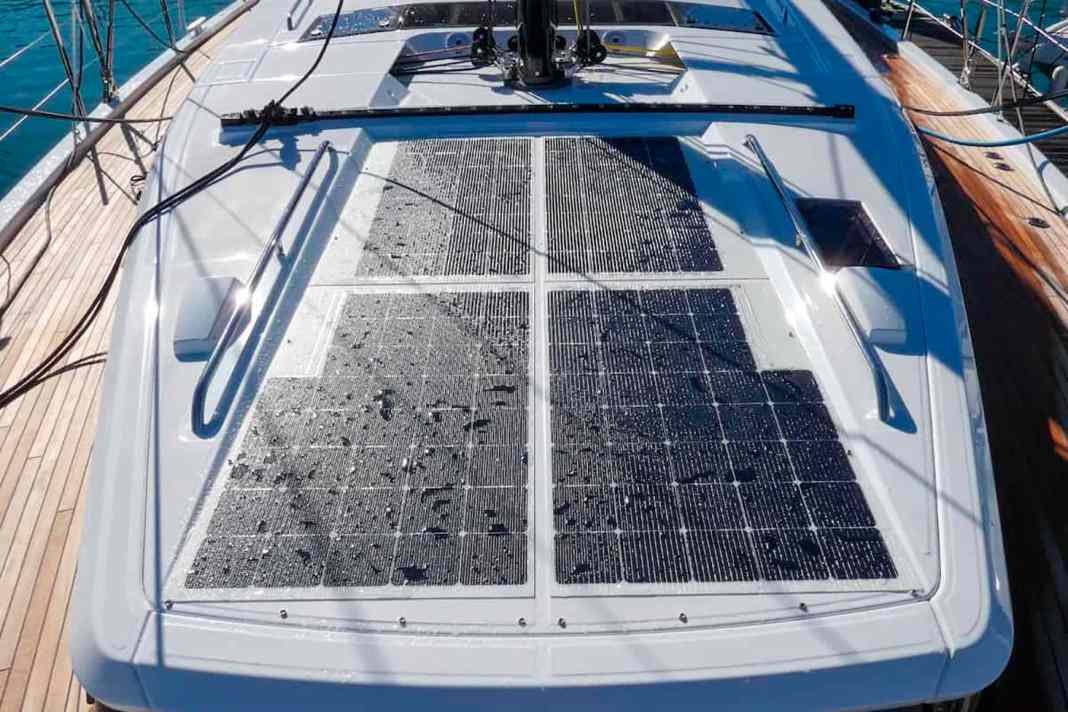Technology: Effective solutions for the shading problem with solar modules




Roughly speaking, the output of a solar cell is reduced by 10 to 20 per cent when the sky is overcast; partial shading can have a similarly devastating effect. However, the size and type of shadow play a role here. A diffuse but extensive shadow, for example from a sail, acts like cloud cover and reduces the output accordingly by around 80 per cent.
The narrow, equally diffuse shadow of a stay, on the other hand, hardly costs any power, while the hard shadow of a large tree or a railing support can almost completely stop power production, even though only one corner of the module is affected.
This behaviour is due to the properties of the solar cells and their interconnection in the module. A single cell supplies around 0.5 volts. In order to achieve the voltage required for a 12-volt system, several cells are connected in series as a string.
Reduce the shading problem with bypass diodes?
The problem with this is that in a series connection, the weakest cell limits the current of the entire system. So if a solar cell is shaded, the module only supplies as much power as this cell is still producing. A larger diffuse shadow affects several cells, but reduces their output less than a hard shadow that causes a cell to collapse completely. There is no real solution to the problem, as there is no way around series connection to achieve the required voltage. It is often argued that the shading problem can be reduced by using so-called bypass diodes.
These diodes are connected in parallel to the solar cells and function in a very simplified way like a valve. As long as the solar cells are supplying full voltage, the diodes are blocked. If the voltage of the cells drops due to shading, the diode opens and bypasses the shaded cells so that the rest of the module can continue to supply electricity. In practice, this effect is minimal, as the rest of the panel without the shaded cells also supplies less voltage.
Checking the solar modules for overheating
The bypass diodes are much more important in order to avoid hotspots. This is the term used to describe the overheating of shaded cells. If a cell can no longer supply the same current as its neighbours, it becomes a resistor, to put it simply. The problem with this is that when the voltage of the other cells reaches around 15 volts, the shaded cell begins to absorb an enormous amount of power and converts this into heat. In the process, it heats up so much that it is destroyed. To avoid this, bypass diodes are used after a maximum of 24 cells, which can be imagined as a valve as described above. In this way, the maximum reverse voltage on the shaded cell is limited to 24 times 0.5 volts, which is below the critical 15 volt mark, and the cell converts much less power into heat.
Intelligent distribution of solar modules
In order to reduce the drop in performance in the event of shading, instead of using diodes, you should pay more attention to intelligent distribution of the modules and connect them appropriately. Even on smaller yachts, it can make sense to divide the system into port and starboard sides, which are then connected in parallel or ideally have separate charge controllers. This can compensate for the shadow cast by the large boom. Solbian sometimes uses 10 to 15 networked charge controllers for complex systems in order to isolate shadow modules.
